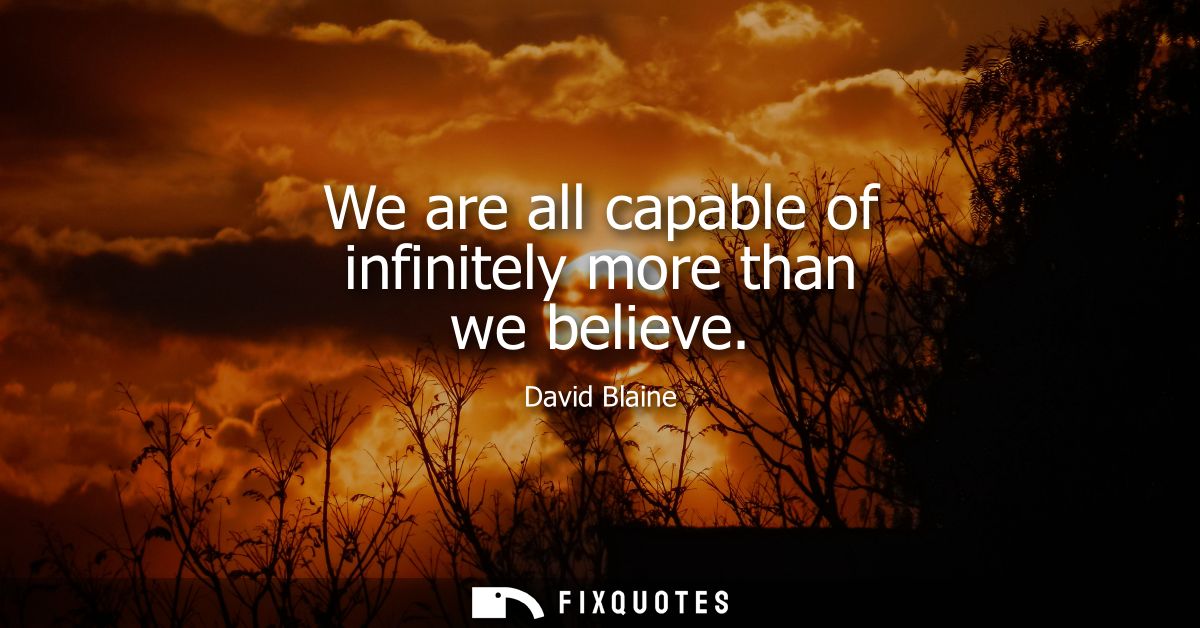"We are all capable of infinitely more than we believe"
About this Quote
Belief often functions as an invisible ceiling. We inherit limits from past failures, social expectations, and stories we tell ourselves, then mistake those limits for reality. David Blaine’s assertion points to the gap between perceived capacity and actual capacity, a gap that only reveals itself when we deliberately press against it. The mind predicts danger to keep us safe, but it also underestimates what practice, adaptation, and time can unlock.
“Infinitely more” need not be read as mathematical infinity; it speaks to an open horizon. Human systems adapt far beyond initial baselines: muscles grow under progressive load, lungs and blood chemistry adjust with controlled stress, neural pathways reshape through focused repetition. Endurance feats make this visible, but the pattern holds across domains, learning a language, building a business, composing music, repairing a relationship. What looks like impossibility is often unfamiliarity plus insufficient iteration.
Fear and comfort conspire to freeze growth. The antidote is small, repeated experiments that generate evidence against limiting assumptions. Set a challenge just outside your current range, track results, recover, and stretch again. Seek friction: feedback from mentors, deadlines that bite, environments that normalize ambition. Treat willpower as a skill, not a trait; cultivate routines that remove decision fatigue and make the hard thing the default. When setbacks arrive, interpret them as data, not verdicts.
Humility is part of the promise. If potential is larger than belief, then certainty about one’s limits is usually arrogance in disguise. Curiosity becomes a strategy: What happens if I train for 30 minutes daily for 90 days? If I ask for help? If I remove a distraction? Each tested hypothesis revises the map of the possible.
Choose one boundary you’ve accepted without proof. Design a safe, measurable push against it this week. Capability expands like a horizon: step forward, and it moves with you.
About the Author

